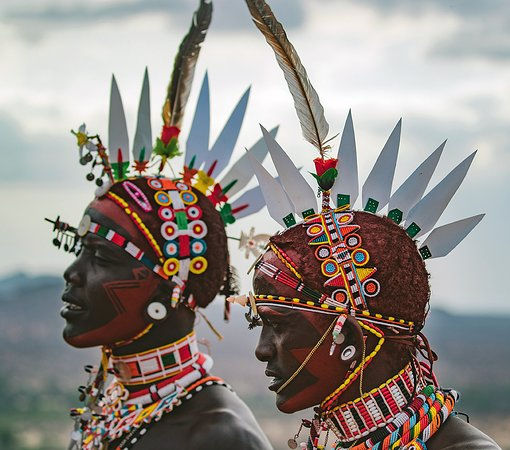Samburu: Kenya’s Untouched Heart of Culture & Wilderness
- claire0052
- Sep 5
- 3 min read

Tucked away in the rugged, sunbaked northern frontier of Kenya lies a place that is as wild as it is beautiful—Samburu. A region of stark landscapes, majestic wildlife, and deeply rooted traditions, Samburu is one of Kenya’s most authentic and unforgettable travel destinations. It’s not just about the safari (though the game drives are phenomenal)—it’s about encountering a way of life that has resisted the pull of modernity.
Where Is Samburu?
Samburu is located north of the equator, in a semi-arid region of northern Kenya. It’s part of a trio of reserves—Samburu National Reserve, Buffalo Springs, and Shaba—that form one of the most wildlife-rich areas outside of the more famous Maasai Mara. Despite its remote setting, Samburu has become a sought-after destination for travelers seeking something a bit different from the standard safari circuit.
The Samburu People: Guardians of a Traditional Way of Life
The Samburu people, close cousins to the Maasai, are semi-nomadic pastoralists known for their colorful dress, elaborate beadwork, and proud warrior culture. Unlike many modern communities, the Samburu still live much as they have for centuries—moving with their cattle, goats, and camels in search of pasture and water.
Hospitality is central to Samburu culture. Visitors are often welcomed with warmth and curiosity. Many lodges and local tour operators now partner with Samburu communities to offer immersive cultural experiences—such as visiting a manyatta (traditional homestead), learning about their rituals, or watching traditional dances.
Their deep connection with the land and their cattle is not just economic—it is spiritual. In Samburu cosmology, cattle are a divine gift and a sign of wealth, status, and blessing.

Wildlife and the “Samburu Special Five”
Samburu’s arid environment may look harsh, but it teems with life. The region is known for its unique species that are rarely seen elsewhere in Kenya. This has led to the term “Samburu Special Five”, which includes:
Grevy’s Zebra – With its narrow stripes and larger size, it’s the rarest zebra species.
Reticulated Giraffe – Easily identified by their bold, geometric patterns.
Beisa Oryx – With their straight horns and grayish coat, they blend into the dry bush.
Somali Ostrich – Larger and with bluish necks, unlike their southern cousins.
Gerenuk – A long-necked antelope often seen standing on its hind legs to browse trees.
The Ewaso Ng’iro River, the lifeblood of the reserve, attracts elephants, lions, leopards, crocodiles, and countless birds. Unlike some more crowded reserves, Samburu offers a more intimate, uncrowded safari experience.

Things to Do in Samburu
Game Drives – Morning and evening drives reveal the full spectrum of Samburu’s wildlife.
Cultural Tours – Visit local villages to understand the customs and daily life of the Samburu people.
Bird Watching – Over 450 species call this region home, including kingfishers, eagles, and hornbills.
Camel Safaris – For a unique twist, trek across the bush on camelback, guided by Samburu warriors.
Star Gazing – With little light pollution, Samburu’s night skies are spectacular.

When to Visit Samburu
Samburu is a year-round destination, but the best time to visit is during the dry seasons (June to October and December to March), when wildlife is easier to spot around the Ewaso Ng’iro River. The rainy season (April–May) brings lush landscapes and fewer tourists, but some roads can become challenging.
Getting There
Most visitors fly into Samburu’s airstrips via small chartered planes from Nairobi’s Wilson Airport. Road trips are also possible, though the drive can take up to 6-7 hours from Nairobi, offering an adventurous journey through changing landscapes.
Why Samburu Should Be on Your Travel Radar
Samburu is not just a destination—it’s an experience. It’s the stillness of the golden plains at dawn, the thunderous footfalls of elephants crossing the river, the haunting chants of Samburu warriors under a starlit sky.
For travelers seeking connection—both with nature and with a culture that still thrives despite the odds—Samburu offers a journey into the soul of Kenya.
_edited.png)


